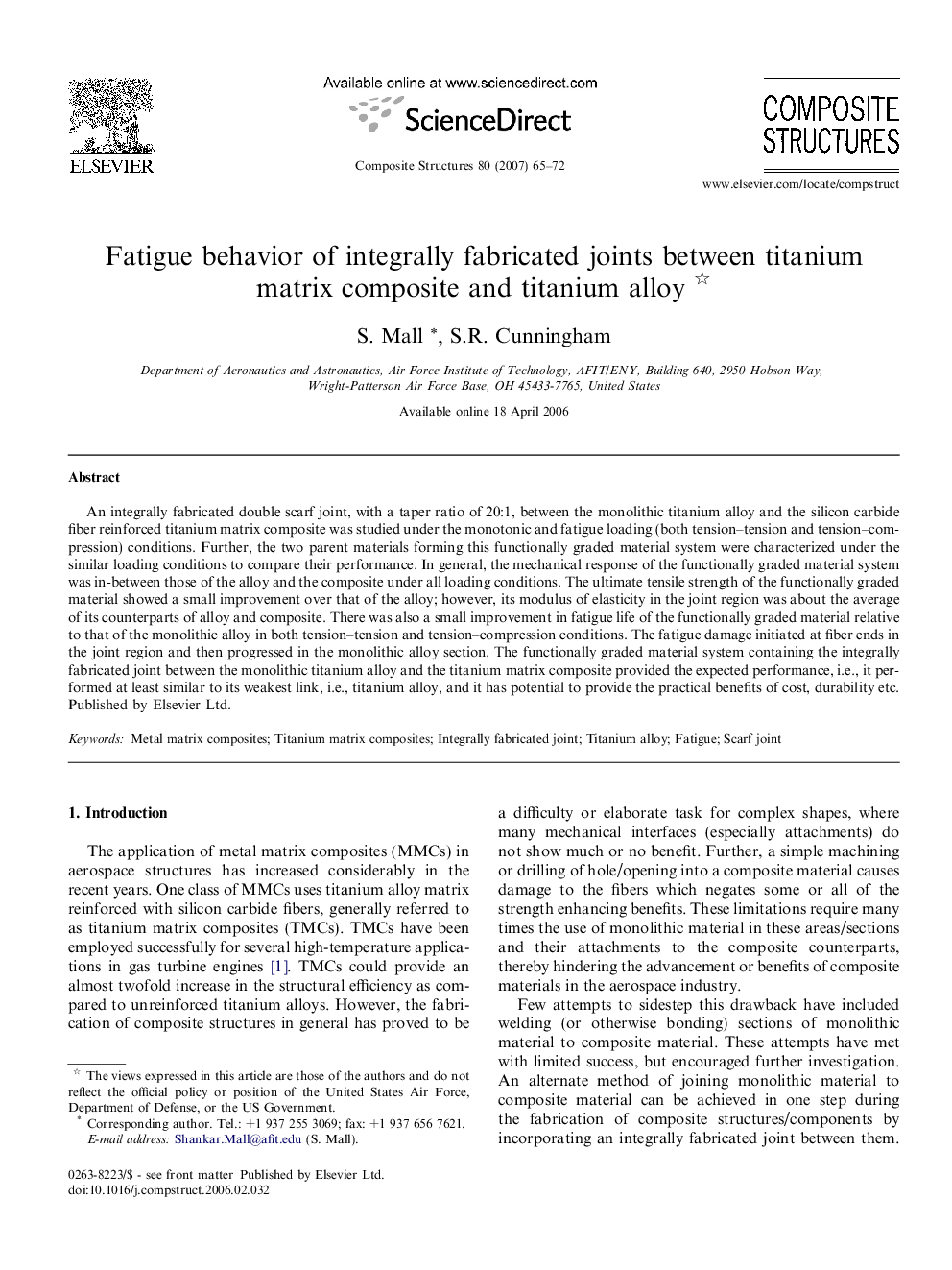| Article ID | Journal | Published Year | Pages | File Type |
|---|---|---|---|---|
| 254102 | Composite Structures | 2007 | 8 Pages |
An integrally fabricated double scarf joint, with a taper ratio of 20:1, between the monolithic titanium alloy and the silicon carbide fiber reinforced titanium matrix composite was studied under the monotonic and fatigue loading (both tension–tension and tension–compression) conditions. Further, the two parent materials forming this functionally graded material system were characterized under the similar loading conditions to compare their performance. In general, the mechanical response of the functionally graded material system was in-between those of the alloy and the composite under all loading conditions. The ultimate tensile strength of the functionally graded material showed a small improvement over that of the alloy; however, its modulus of elasticity in the joint region was about the average of its counterparts of alloy and composite. There was also a small improvement in fatigue life of the functionally graded material relative to that of the monolithic alloy in both tension–tension and tension–compression conditions. The fatigue damage initiated at fiber ends in the joint region and then progressed in the monolithic alloy section. The functionally graded material system containing the integrally fabricated joint between the monolithic titanium alloy and the titanium matrix composite provided the expected performance, i.e., it performed at least similar to its weakest link, i.e., titanium alloy, and it has potential to provide the practical benefits of cost, durability etc.
